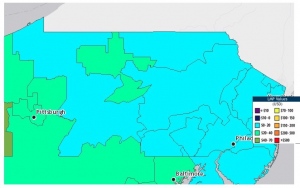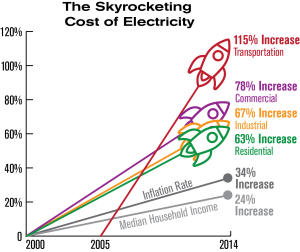Retain Electricity Plans using flat pricing and dynamic pricing can definitely give better results than that. Let us discuss some research and literature views of various people in the past few years regarding the pros and cons of flat pricing and dynamic pricing. Various research papers have been published regarding this from time to time. In 2013, it was totally proven by Desai and Dutta That this new method of dynamic pricing is certainly more efficient economically because it does not allow the peak to occur and all the surplus arising due to the demand is absorbed. Traditional flat rate prices can never achieve this. So the total revenue will definitely be increased even at the existing cost and peak loads will be reduced beyond doubt.

In 2012, Celebi and Fuller demonstrated that total surplus increases due to flat pricing in different market structures. In 2003, Borenstein and Holland also managed to show The inefficiency and economic ineffectiveness of flat-rate prices and suggested that the share of customers needs to be increased to improve economic efficiency but the point to be noted here is that increasing the RTP share of customers is not guaranteed to reduce the investments that will be needed to increase the capacity. In 2010, Faruqui stated in relation to research that Energy pricing in relation to variation in demand can lead to a major reduction in the demand curve.
He stated that around 10 to 14% of peak demand would be reduced, the cost of resources will also be reduced by 3 to 6%, the market-based customer cost will also be reduced by 2 to 5% and hundreds of millions of dollars would be saved in a single year and the can be used for other social welfare activities. In 2009, Hledik reported the simulation of a small grid of a country’s power system. It was estimated to show around a 5% reduction in the annual emission of carbon dioxide which would ultimately culminate in about 11.5% of production at its peak by the year 2030.
In 2008, however, Holland and Mansur argued that Implementation of the RTP scheme may reduce the load On power plants but it may eventually lead to an increase in the emission levels. The negative impact of the emissions will vary according to the power generating unit that is being used. In 2006 Harris described a new way to derive the price of electricity. He indexed it against the present and past average values of wholesale electricity rates.
In 1993, David and Li Demo stated the cross elasticity of demand. They stated that varying according to variation in demand will affect the management of peak and supply positively. Price variation can occur in different markets if there is a delay in the flow of information between them. Skantze stated this in the year 2000. To maintain the correlation among prices, the markets need to be connected by transmission lines and they need to be devoid of congestion. It has also been mentioned that variation in the pricing of electricity can also depend on other causes like the type of energy being used, the efficiency of technology, and the factors related to consumers like the pattern of energy consumption.

